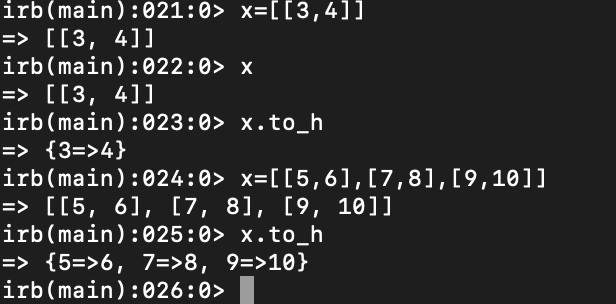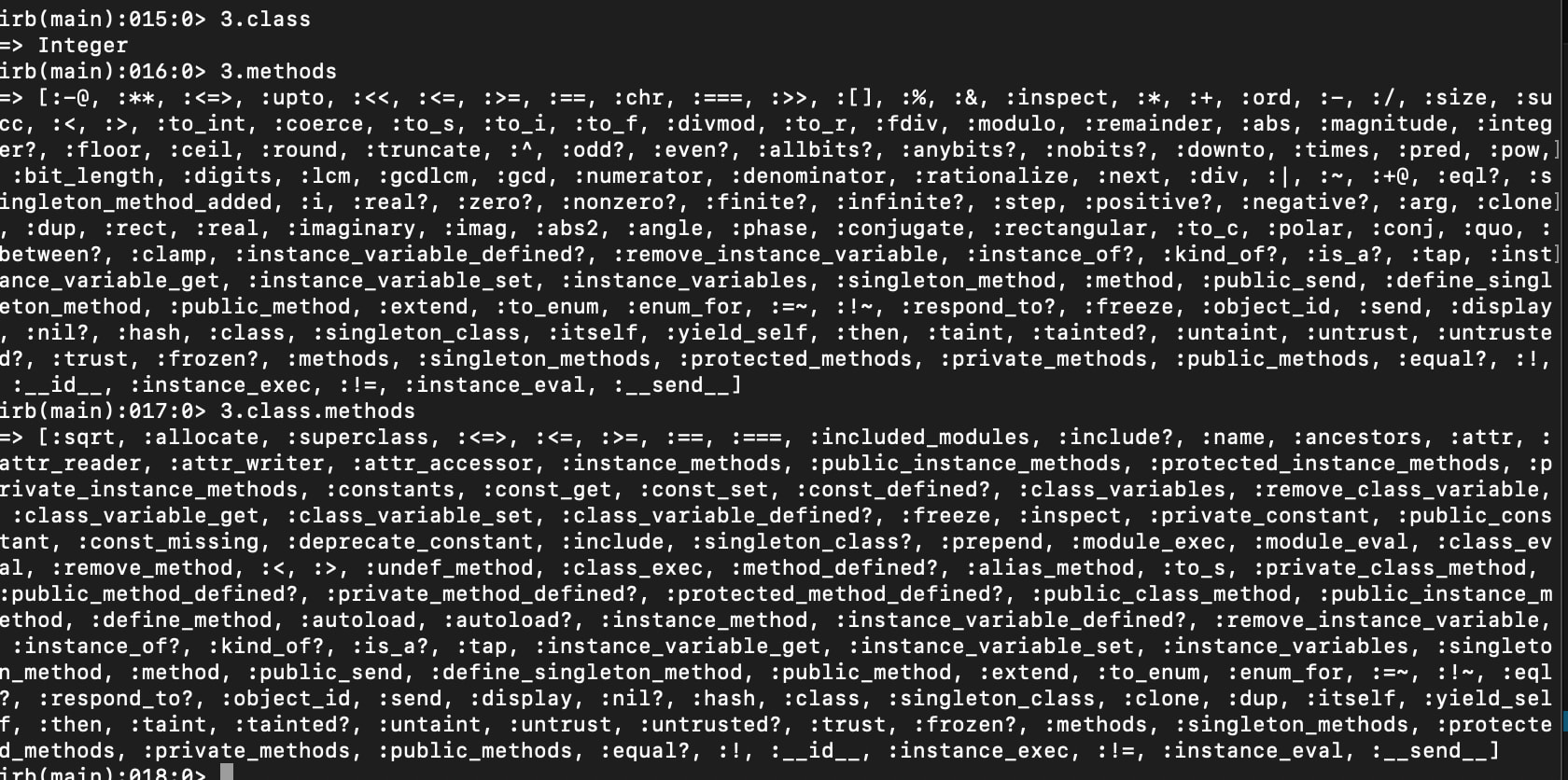I tried converting between hashes and arrays. I guess because hashes are key-value pairs that it can only convert arrays that consist of two things into hashes? I tried converting my larger arrays into hashes. Didn’t work. When I googled it, I didn’t find an explanation on converting between hashes and arrays. I just found example code where the arrays only had two values. Something like this:
I noticed it didn’t work if I just did [3,4]. It needed double square brackets. So the array has to have stuff already in pairs to make it into a hash?


